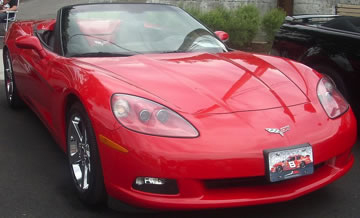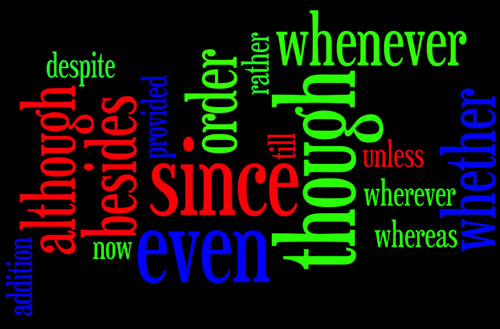Understanding Phrases and Clauses
Before you can edit for sentence structure, you must understand the difference between phrases and clauses, and you must know how these groups of words operate within sentences. If you don’t grasp phrases and clauses, you will only be guessing about sentence structure, not editing for it based on understanding. While this section doesn’t deal with everything there is to know about phrases and clauses, it does cover the major points you need to know to check for proper sentence structure.
Phrases
Know the definition of a phrase, and be aware that there are several kinds. You don’t have to memorize the types, but you do need to recognize how they function in sentences. In most cases, a phrase acts as a single part of speech. Here's a brief review of the types of phrases used most often:
Prepositional phrase: Begins with a preposition and usually ends with a noun or pronoun; acts as an adjective, adverb, or occasionally as a noun
- After the movie will be too late. (acts as a noun )
- The package on the porch is mine. (acts as an adjective that modifies package)
- Jasper ran from Grace and me. (acts as an adverb that modifies ran)
Participial phrase: Contains a participle and its modifiers; acts as an adjective
- The girl, walking too rapidly, tripped on the curb. (acts as an adjective that modifies girl)
- Destroyed by flood waters, the home was never rebuilt. (acts as an adjective that modifies home)
Gerund phrase: Contains a gerund and its modifiers; acts as a noun
- Telling the secret was a big mistake. (acts as a subject)
- My counselor advised sending college applications early. (acts as a direct object)
Infinitive phrase: Contains an infinitive (to plus the root of the verb) and its modifiers; acts as a noun, adjective, or adverb
- To save money is one of my goals. (acts as a noun subject)
- There must be a way to solve this problem. (acts as an adjective that modifies way)
- Jorge went to college to study physics. (acts as an adverb that modifies went by telling why)
Noun phrase: Contains a noun and any associated modifiers; acts as a noun
- The long and curvy driveway leads up to my house. (noun driveway and its modifiers; acts as a subject)
- An arsonist burned the old building by the railroad tracks. (noun building and its modifiers, which include the prepositional phrase by the railroad tracks; acts as a direct object)
Appositive phrase: A noun phrase that follows another noun or pronoun to explain or identify it

Source: ’07 Chevrolet Corvette Convertible: Cruisin’ at the Boardwalk ’10,
Bull-Doser, Wikimedia Commons
- Her car, a beautiful red Corvette convertible, cost more than I’ll earn working all year. (noun phrase that modifies car)
- His biggest regret, an argument he caused, would haunt him for the rest of his life. (noun phrase that identifies regret)
- Marco’s dream, his desire to become a professional basketball player, was the reason he pushed himself so hard at every practice. (noun phrase that identifies dream)
Look back at the phrases in red. They are located in different places in the sentences and function in different ways, but they do have one thing in common: they can never be complete sentences by themselves. Check your essays carefully, and if you find that you have used a phrase as a sentence, either eliminate it, or fix it by adding the elements it’s missing to make a complete sentence.
Clauses
In terms of sentence structure, clauses are even more important than phrases because clauses are the main building blocks of sentences. Unlike phrases, all clauses have both a subject and a verb. You must, however, be able to differentiate between the two major categories of clauses. Understanding clauses will help you avoid the two big sentence structure errors we will look at later.
As we look carefully at clauses, keep in mind this guiding principle of editing for sentence structure: a complete sentence must include at least a subject and a verb in one independent clause.
Independent clause: Also called a main clause, this type of clause can stand by itself as a complete sentence. Independent clauses are strong, just like independent people are strong and can get along by themselves.
- Zeke broke the expensive vase. (independent clause; subject - Zeke; verb - broke)
- Zeke broke the expensive vase when he was six years old. (independent clause; can be removed from the sentence and stand alone)
It’s not too difficult to recognize and use independent clauses correctly, is it? Unfortunately, the same cannot be said of the second category of clauses.
Subordinate clause: Also called a dependent clause, this type of clause can cause problems because it cannot stand by itself as a complete sentence. Subordinate—or dependent—clauses are just like dependent people. They are not strong enough to get along by themselves; they need help to become sentences. In fact, the word subordinate means “controlled by another.” The good news is that this kind of clause is easy to spot. A dependent clause will begin with either a subordinating conjunction or a relative pronoun. A list of subordinating conjunctions appears in the graphic below.

Source: Subordinating conjunctions, IPSI
- Zeke broke the vase when he was six years old. (subordinate clause; begins with the subordinating conjunction when; subject - he; verb - was)
- When he was six years old. (Yikes! This subordinate clause cannot stand as a complete sentence.)
There are three kinds of subordinate clauses. Each kind acts as a single part of speech—an adjective, adverb, or noun—within a sentence.
Adjective clause: a subordinate clause that modifies a noun or pronoun
- The house where Shakespeare was born is still standing. (adjective clause; begins with subordinating conjunction where and modifies the noun house)
- She was one who complained every day. (adjective clause; begins with relative pronoun who and modifies the pronoun one)
Adverb clause: a subordinate clause that modifies a verb, adjective, or another adverb
- Ruth watches television whenever she can. (adverb clause; begins with subordinating conjunction whenever and modifies the verb watches)
- Taylor feels confident that he will win the contest. (adverb clause; begins with subordinating conjunction that and modifies the adjective confident)
- Sally sings better than I do. (adverb clause; begins with subordinating conjunction than and modifies the adverb better)
Noun clause: a subordinate clause used as a noun within an independent clause
Note: Noun clauses substitute for nouns within independent clauses instead of modifying other words, so they can be more difficult to spot than adjectives or adverb clauses.
- The newspaper editor knows why the reporter is in trouble. (noun clause; acts as a direct object within the independent clause)
- Whether the plan will work remains a mystery. (noun clause; acts as a subject within the independent clause)
- Josh’s teachers are concerned about what his semester grades will be. (noun clause; acts as the object of the preposition about within the independent clause)
Now that you have reviewed phrases and clauses, it’s time to see how well you understand the differences between them. Choose “independent” or “subordinate” for each of the following phrases and clauses.
Remember that independent clauses include a subject and a verb and can stand alone as a complete sentence; subordinate clauses cannot stand alone, and they begin with a subordinating conjunction or a relative pronoun.
Now let’s throw phrases into the mix. See if you can pick phrases, independent clauses, and subordinate clauses out of sentences.
Think about whether the words in blue in each sentence are a phrase, an independent clause, or a subordinate clause. When you have an answer in mind, roll over the blue part of the sentence to see the correct response. An explanation will appear at the bottom of the exercise.